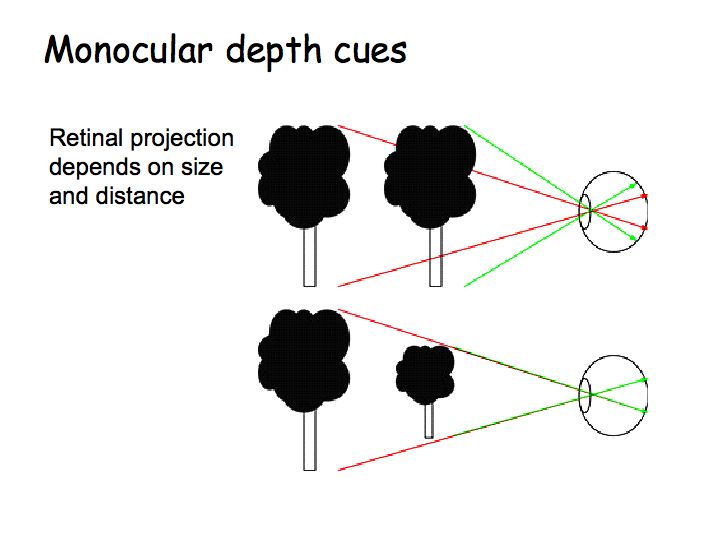
For binocular trials, pointing was based on binocular information and precisely matched the changes in display orientation whereas depth judgment was short of such adjustment and based upon both binocular and perspective-specified slant information. On monocular trials, pointing and depth judgment were based on the perspective information and failed to respond accurately to changes in display orientation because pictorial information did not vary sufficiently to specify the small differences in orientation. We compared pointing towards the display-edges with perceptual judgment of their positions in depth as the display orientation was varied under monocular and binocular view. The display, when presented perpendicular to the line of sight, provided perspective information for a rectangular window slanted in depth, while binocular information specified a planar surface in the fronto-parallel plane. To investigate the processing of linear perspective and binocular information for action and for the perceptual judgment of depth, we presented viewers with an actual Ames trapezoidal window. The processing of linear perspective and binocular information for action and perception.īruggeman, Hugo Yonas, Albert Konczak, Jürgen This article is part of the themed issue ‘Vision in our three-dimensional world’. In this review, I examine the evidence for impairment of binocular vision and depth perception that can result from insults to the brain, including both discrete damage, temporal lobectomy and more systemic diseases such as posterior cortical atrophy.

However, the significant cortical processing required to produce the percept of depth means that, even when the retinal input is intact from both eyes, brain damage or dysfunction can interfere with stereoscopic vision. The most common cause for loss of stereoscopic vision is amblyopia, in which one eye has failed to form an adequate input to the visual cortex, usually due to strabismus (deviating eye) or anisometropia. Stereoscopic depth perception requires considerable neural computation, including the initial correspondence of the two retinal images, comparison across the local regions of the visual field and integration with other cues to depth. © 2016 The Authors.Įffects of cortical damage on binocular depth perception In this review, I examine the evidence for impairment of binocular vision and depth perception that can result from insults to the brain, including both discrete damage, temporal lobectomy and more systemic diseases such as posterior cortical atrophy.This article is part of the themed issue 'Vision in our three-dimensional world'. A binocularly observed configuration of constant convergences, constant visual size, and having constant binocular disparities was made to appea.Įffects of cortical damage on binocular depth perception.

This study was concerned with the factors involved in the perception of depth from a binocular disparity. The perception of depth from binocular disparity.ĭOT National Transportation Integrated Search


 0 kommentar(er)
0 kommentar(er)
